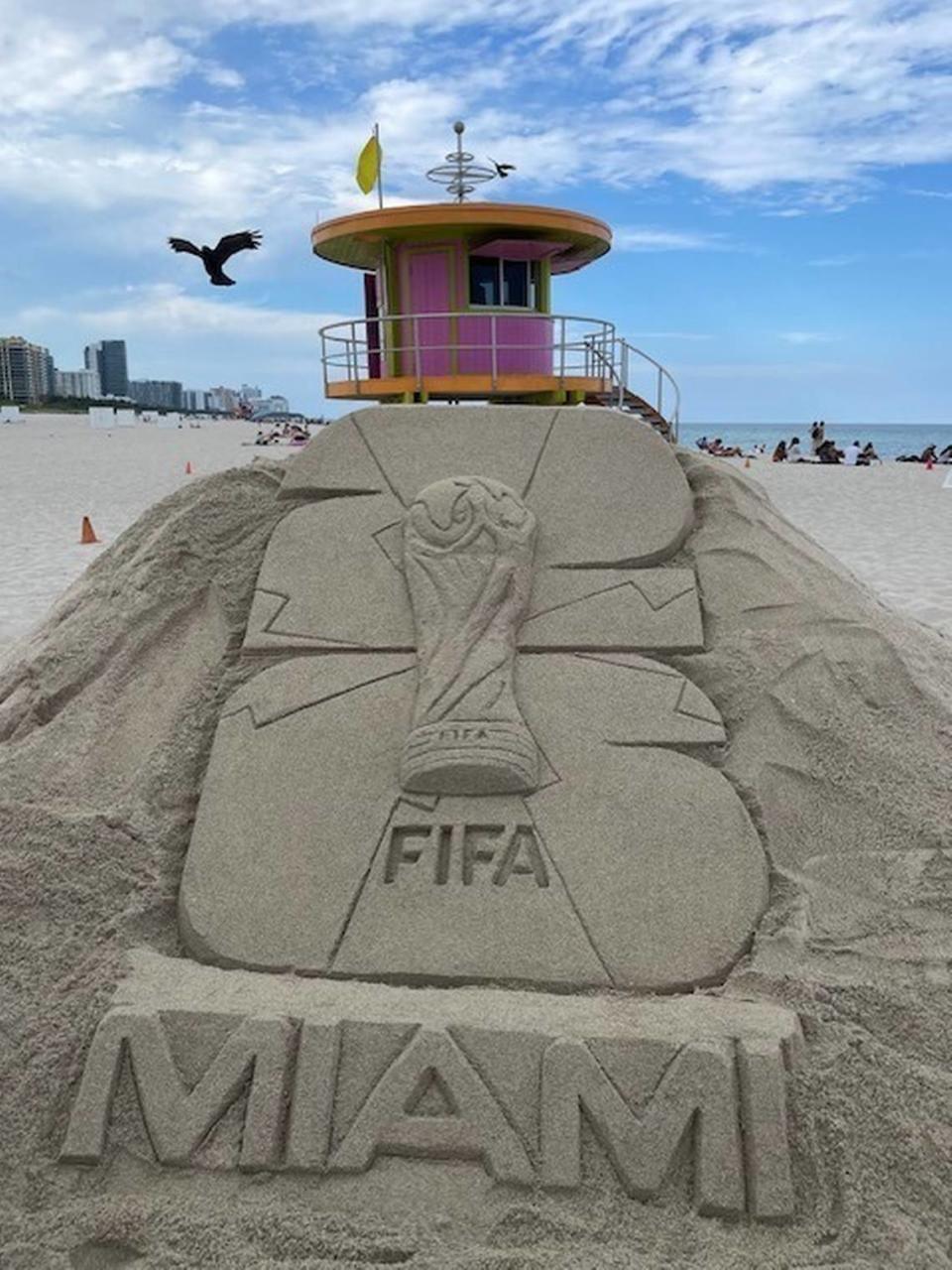FIFA delegation kicks off World Cup 2026 host cities tour in Miami on Wednesday
Most of the offices and cubicles are still empty, and there are boxes left to be unpacked, but preparations for the world’s largest sporting event have begun in FIFA’s new 60,000-square foot World Cup ’26 headquarters in the heart of downtown Coral Gables.
Step off the fourth-floor elevator at the swank office tower and you are greeted by World Cup signage and a video billboard showcasing tournament highlights and legends, including Inter Miami’s Lionel Messi.
The next World Cup will be held from mid-June to mid-July, 2026, across 16 cities in the United States, Mexico and Canada. FIFA executives are embarking Wednesday on a four-week operational tour of the host cities, starting with Miami, which could host as many as four to six games at Hard Rock Stadium.
Local organizers in South Florida also are bidding to host pre-Cup national team training camps, tournament training sites and international media and broadcast centers.
The FIFA delegation will meet Wednesday with Hard Rock Stadium officials, government officials, local police and security experts, directors of transportation and tourism, and other agencies involved in hosting the Cup.
“We’re bringing a wide group of operational experts, international and from our local subsidiary, to familiarize themselves with the whole operation for each city and go into great detail in terms of how we will organize the event, how to reconfigure some of the stadium operations and the surrounding areas,” Heimo Schirgi, Chief Operation Officer of FIFA World Cup ’26, told the Miami Herald. “We will liaise with all the authorities and get advice on their best practices, how events are usually organized there, etc.”
Schirgi said a full tournament schedule, with dates and locations, is expected to be announced by the end of the year, although the 48 teams won’t be known until after qualifying tournaments.
New York Met Life Stadium and AT&T Stadium in Arlington, Texas, are considered the likeliest choices to host the World Cup opener and final. Both meet the minimum requirement of 80,000 seats and are bidding to host those marquee games.
With the tournament spanning three countries for the first time, FIFA is working on a schedule that minimizes travel for teams and fans.
“It makes it more challenging, obviously, because we have the travel distances,” Schirgi said. “We’re trying to mitigate that by having teams stay in certain clusters, so both the teams and the fans’ movement is more restricted. But we also see it as an opportunity to spread the event and promote football across a huge footprint and celebrate the uniqueness that all the host cities can bring.”
Miami-Dade mayor Daniella Levine Cava said in May that details were being finalized for the naming of the 2026 Miami World Cup Host Committee, which will include government, civic, hospitality, business and sports leaders.
Local organizers are optimistic that Miami will be a key venue.
“FIFA has been playing very close to the vest, so we honestly don’t know how many games, but we are hopeful it will be on the higher end of the two- to six-game range because Miami is the only host city in Florida, it’s uniquely and geographically positioned to be easy in, easy out from throughout the hemisphere, so we think there are significant advantages to having as many games as possible in Miami,” Rolando Aedo, COO of the Greater Miami Convention and Visitors Bureau, said in a recent interview with the Herald.
“We also have this amazing stadium that has been updated and was built for world-class soccer and has a proven track record with soccer. So, we are optimistic that FIFA will decide to maximize the number of games in Miami. We also feel we are very well positioned to capture the lion’s share of some of the other high-profile opportunities like the media center as a big outpost of Spanish-speaking media.”

Schirgi said FIFA chose to house its World Cup ’26 headquarters in Miami because it is a global city, and gateway to South and Central America. It also happens to be the headquarters for CONCACAF, the soccer governing body of North and Central America and the Caribbean. The fact that David Beckham and Lionel Messi are with Inter Miami is a bonus.
“Miami is a very diverse international environment, very attractive to attract a good workforce,” he said. “It is also ideal in terms of time zone and travel, so we see it as a hub and stepping stone into this event.”
The other U.S. host cities are Seattle, San Francisco, Los Angeles, Kansas City, Dallas, Houston, Atlanta, Boston, Philadelphia, and New York/New Jersey. Canadian hosts are Vancouver and Toronto; and Mexican venues are Mexico City, Guadalajara and Monterrey.
Miami is also in the running to be a host city for the 2024 Copa America, which is being held in the United States next summer. The tournament traditionally features 10 South American teams, and this time will also include six teams from CONCACAF (North and Central America and the Caribbean). It is a perfect test run for World Cup host cities.

